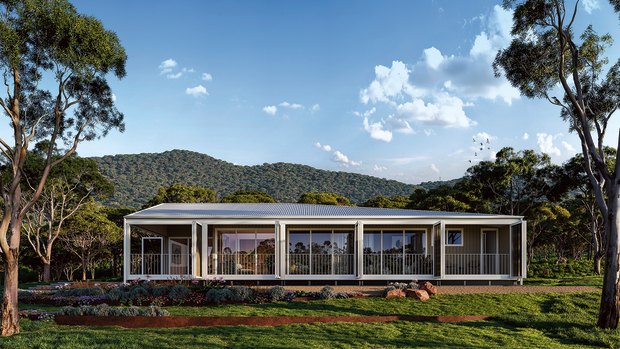
Extreme weather has long been a feature of life in Australia, but you’d never know it the way most Australian homes are designed. Derided by many as “glorified tents”, critics complain that lax standards have created homes that are too cold in winter, too hot in summer and unprepared for natural disasters.
“People used to contact us for help rebuilding after disasters, but now the focus is shifting to more proactive advice-seeking,” says Kate Cotter, chief executive of the Resilient Building Council. “There’s a shift in how we think about things, including more long-term thinking.”

Fortis’ Conjola house design features general resilience to extreme weather and disasters including bushfire sites.Credit: Fortis
The Resilient Building Council helped create the FORTIS House project, a set of designs and principles for resilient homes (like that pictured above) which are freely available online, co-created with affected communities in the wake of 2019/20’s Black Summer.
“Time matters, so it’s important people have good solutions available before disaster happens.”
Build resilience at the start
As climate change creates hotter summers, building climate-resilient homes is not just an issue for people living in areas prone to natural disasters. For anybody building a new home, orientation is a good – and easy – place to start.
The ideal orientation is “true” solar north, which differs to the magnetic north of a compass, says Kelvin Wicks, a researcher with think tank Beyond Zero Emissions.
“Good design is something you will never regret,” he says. “It’s cheaper to get it right at the outset, than retrofit down the line. Research also indicates that a more energy-efficient home will attract higher sale prices. It’s a worthwhile investment.”









 Add Category
Add Category